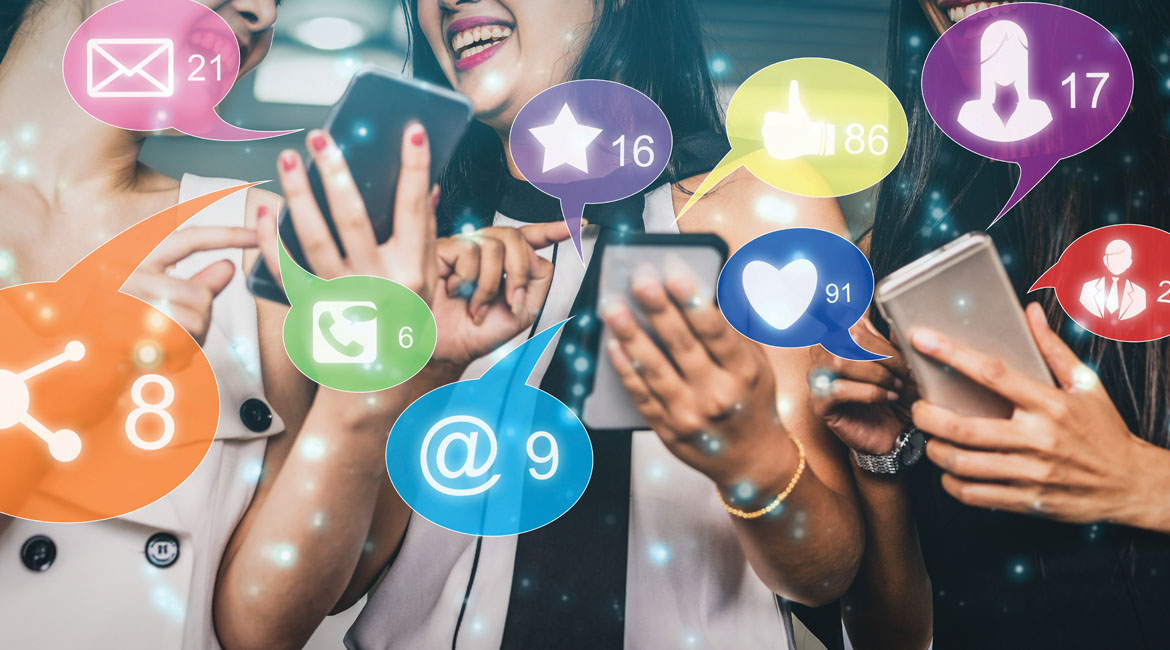Can Gravvity, a disruptive, privacy-centric challenger change the rules of social media engagement?
The world continues to grapple with social media’s influence as Facebook struggles with privacy woes and fake news and other platforms find themselves under closer scrutiny in the current political environment. Enter a new social engagement application (app), still in development, which should be on our radar screens. It’s actually called Gravvity (with two v’s). Unlike other politically motivated social media platforms that have recently launched or are in development, Toronto-based Gravvity’s CEO and co-founder Jerry Chien has apolitical aspirations.
“We are creating a spam-free platform,” proclaimed Chien, a 44-year-old Canadian with blockchain cryptocurrency experience, explaining how unsolicited advertisements are not a part of his reinvented next generation algorithm. Chien envisions a social media experience that does not exploit or manipulate people for their data and attention. The fully-featured Gravvity app combines and filters user’s social feeds, then organizes them chronologically—not according to ads. There is no endless scrolling nor random content. It also eliminates the commonplace fear of missing out (FOMO) because customers know when friends make new posts on any of their social platforms.
Think of Gravvity as chat on steroids, so to speak, with a centralized, social media hub built-in. However, the number of “likes,” comments, and followers have been intentionally removed. Chien considers such external validation features harmful to the more positive, “healthier” social-media experience that he and his team are working so diligently to facilitate. Instead, friends can react privately to posts directly, via chat, without having to broadcast their comments to the rest of the world.
Giving Preferences Top Priority
Gravvity employs an opt-in default setting for ads. Customers can choose to keep their data completely private (the default), or they can share their public data with select businesses in exchange for personalized incentives and discounts. “People can choose ads and deals that meet their criteria and that they are interested in viewing,” Chien continued. The goal of this more personalized approach is empowering users “to have 100% control over their content.” The company is big on transparency and building trust.
How do he and his cohorts plan to monetize their business model? By getting rid of the middle man, revealed Chien, who plans to share 50% of Gravvity’s advertising revenue with users. “People will get paid for seeing ads,” the CEO confirmed. Essentially, their feeds become online billboards, which they can “rent out” to advertisers. “We aim to help consumers leverage data,” he said.
Gravvity had 20,000 wait-list users within one week of advertising, stated Chien. Still in beta-test mode, the new chat app plans a full-scale launch by the end of May 2021 for IOS and Android users. He believes the viral effect will work its magic this summer, post-launch.
“The average person has 15 friends,” he said. Beta-users who interact, stay engaged, and enjoy their experience hopefully will recommend the app to their friends. Doing the math, conservatively, there could be up to 300,000 Gravvity users out of the gate. Then, multiply that number by a factor of 15 again, and it jumps up to 4.5 million already, then 67.5 million, and heading toward the one-billion-user milestone.
May We Have Your Attention?
Gravvity’s young management team (the average age is 34) realizes the enormous potential of the competitive landscape: For example, some 500 million monthly worldwide users reportedly use Telegram instant-messaging, cross-platform freeware. Meanwhile, Facebook’s WhatsApp service features more than two billion monthly active users. (For the record, Facebook CEO Mark Zuckerberg also reigns over Instagram.)
Translating those eyeballs to dollars, in the United States alone, the amount spent on social advertising exceeded $40.3 billion in 2020, according to market research firm Statista, and is projected to reach nearly $50 billion this year. By the end of 2022, expect advertisers to spend some $57 billion on promoting their products on social networks.
“Most chat apps are functional but boring,” acknowledged Chien. “Social hubs have the advantage there.” He and co-founders Jason Herrington (25) and Anja Vukovic (34) have a different, hybrid vision for Gravvity.
“We understand the concept, the decentralization, and understand what communities look like,” Chien said, with the main premise being that social media should benefit the people, not the advertisers. CPO Herrington, a brand enthusiast from South Africa, brings his youthful design experience from Snapchat, Spotify, and Twitter, where he helped drive digital advertising and product strategies. Vukovic, who is in charge of operations, adds IT expertise in software, digital-asset custody, and cybersecurity.
Gravvity is currently building out its ad engine, a migration that is still seven to nine months on the horizon. Details of how users will be paid (using points or a rewards system, perhaps) are being hashed out and tweaked. But once debugged and perfected, watch out. The winds of change may blow Gravvity’s chat/social app off Isaac Newton’s old apple tree—and right into your smartphone later this year.
The Gravvity Market Opportunity
· 3.81 billion social media users worldwide
· Internet users on social media have an average of eight accounts
· 81% of small and medium-sized businesses maintain social media accounts
· 77% of small businesses use social media for promotional purposes
Source: Gravvity
Access Related Content
To become a subscriber, visit www.thecannatareport.com/register or contact cjcannata@cannatareport.com directly. Bulk subscription rates are also available.


